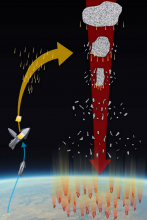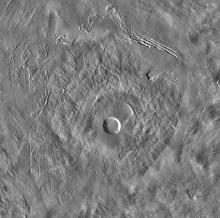Listen to today's episode of StarDate on the web the same day it airs in high-quality streaming audio without any extra ads or announcements. Choose a $8 one-month pass, or listen every day for a year for just $30.
You are here
Bright Lights
The two brightest objects in the night bracket the sky as darkness falls this evening. The almost-full Moon is in the southeast, with Venus, the “evening star,” setting half way around the sky, in the west-northwest.
About the only thing that can challenge the Moon’s brightness is a bolide — the brightest type of meteor. Such flashes are quite rare, though.
One other nightlight can at least challenge Venus, though — the International Space Station. It’s the biggest spacecraft ever built, so it’s especially brilliant — as bright as Venus.
Thousands of satellites are in orbit right now. Most of them are too small, too far, or too dark to see. But some of them are visible as they move across the sky. They’re in sight only for a while after sunset or before sunrise. They’re high enough then to be in sunlight, so they reflect that light down to Earth. But it’s dark at the surface, so we see them streaking across the sky.
The space station is the biggest and brightest. Hubble Space Telescope is a bright target, too. And so are the Iridium satellites — communication satellites in low orbits. They flare brightly when they catch the sunlight just right.
A couple of companies are beginning campaigns to launch thousands of new satellites. They, too, may be pretty bright — especially as they climb to their final orbits. That might be fun to watch — but not fun for astronomers. We’ll have more about that tomorrow.






